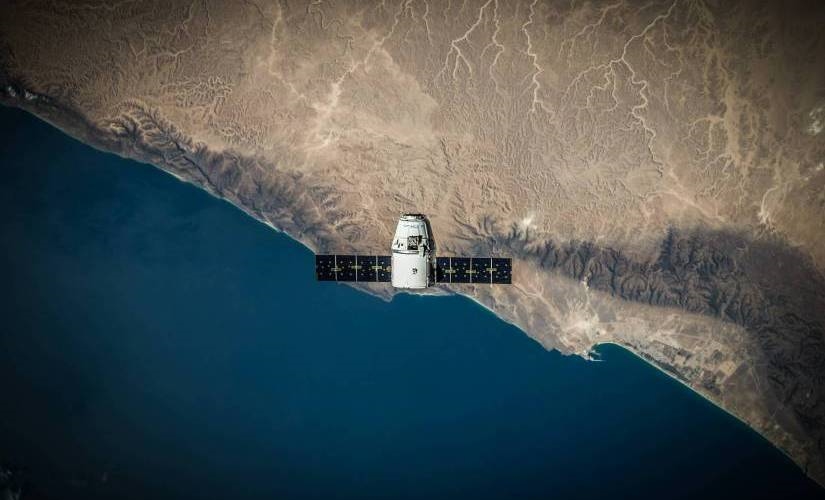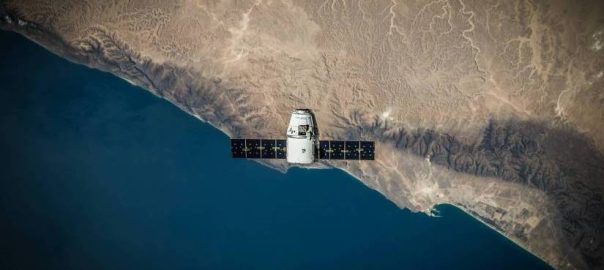Astranis to Bring High-Speed Internet to the Remotest Corners of the Earth

In an ever-evolving world driven by technology, internet connectivity has become an essential part of our lives. However, there are regions where traditional connectivity technologies like fiber or microwave towers face numerous challenges. The Philippines, with its frequent typhoons and vulnerability to natural disasters, is one such place. To address this issue, space-based internet startup Astranis has partnered with satellite services provider Orbits Corp to launch and operate a dedicated satellite for the Philippines. This groundbreaking initiative aims to provide enough bandwidth to connect up to two million people and revolutionize internet connectivity in the country.
The unique geographical and climatic conditions in the Philippines make it a challenging country to cover with traditional connectivity technologies. With over 20 typhoons annually and its position in the Ring of Fire, the Philippines is no stranger to natural disasters that can severely disrupt communication infrastructure. Fiber lines flood, microwave towers topple over, leaving the entire country relying on satellite internet services to stay connected and safe.
Astranis’ solution to the connectivity challenges in the Philippines comes in the form of their “microGEO” satellite. Unlike other satellite internet service providers, Astranis takes a different approach with both its hardware and product. The microGEO satellites, operating at geosynchronous orbit approximately 22,000 miles above the Earth’s surface, offer distinct advantages. These satellites stay in a fixed position relative to their target, enabling continuous access to a large geographical area.
Astranis differentiates itself from other satellite internet providers by partnering with local telecommunications and internet service providers. Rather than offering single subscriptions, Astranis sells broadband capacity, making it equally suitable for connecting hospitals, schools, industrial centers, and individual devices. This strategic approach ensures that their satellite internet service is accessible and beneficial to a wide range of users in the Philippines.
The partnership with the Philippines marks Astranis’ first venture into Asia. With this agreement, Astranis plans to launch a dedicated satellite for the Philippines in 2024. The satellite will be capable of providing enough bandwidth to connect up to two million people, significantly improving internet connectivity in the country. This partnership highlights the increasing importance of satellite internet services in bridging the digital divide and connecting underserved regions.
Astranis’ commitment to expanding internet connectivity extends beyond the Philippines. The company has also secured contracts for various other projects worldwide. Notable among them is a contract to bring service to remote areas of Alaska, where traditional connectivity options are limited. Additionally, Astranis has an agreement with a Peruvian service provider to launch a satellite that will connect up to three million people in the country. These initiatives demonstrate Astranis’ global impact and its dedication to connecting the unconnected.
Astranis has ambitious plans for the future, aiming to launch four more satellites by the end of this year. This includes the satellite for the Philippines, along with satellites for North American customer Anuvu and the forthcoming satellite for Peru. By expanding their satellite network, Astranis will continue to provide reliable and high-speed internet connectivity to underserved regions around the world.
Astranis is revolutionizing internet connectivity by launching dedicated satellites to connect underserved regions. The partnership with the Philippines is a significant step towards bridging the digital divide and ensuring reliable internet access for millions of people. Through their microGEO satellite technology and partnerships with local providers, Astranis is transforming the way internet services are delivered. As they expand globally, Astranis is poised to make a lasting impact on the future of internet connectivity, empowering individuals, businesses, and communities worldwide.
First reported on TechCrunch
Q: How does Astranis’ microGEO satellite technology address the challenges of internet connectivity in the Philippines?
A: Astranis’ microGEO satellite technology offers a unique solution to the connectivity challenges in the Philippines. Operating at geosynchronous orbit, these satellites stay in a fixed position relative to their target area, providing continuous access to a large geographical area. This eliminates the need for traditional connectivity technologies like fiber or microwave towers, which are prone to disruptions caused by natural disasters. By leveraging satellite internet services, Astranis aims to revolutionize internet connectivity in the Philippines and ensure reliable access for millions of people.
Q: What sets Astranis apart from other satellite internet providers?
A: Astranis differentiates itself from other satellite internet providers through its strategic partnerships with local telecommunications and internet service providers. Rather than offering single subscriptions, Astranis sells broadband capacity, making it equally suitable for connecting various entities such as hospitals, schools, industrial centers, and individual devices. This approach ensures that their satellite internet service is accessible and beneficial to a wide range of users in the Philippines.
Q: What are the goals of Astranis’ partnership with the Philippines?
A: Through its partnership with the Philippines, Astranis aims to launch a dedicated satellite in 2024 that will provide enough bandwidth to connect up to two million people. The primary goal is to significantly improve internet connectivity in the country, especially in underserved regions. By doing so, Astranis and its partner Orbits Corp aim to bridge the digital divide and ensure that more people have reliable access to the internet.
Q: What other initiatives has Astranis undertaken to expand internet connectivity?
A: Astranis has secured contracts for various other projects worldwide. For instance, they have a contract to bring service to remote areas of Alaska, where traditional connectivity options are limited. Additionally, they have an agreement with a Peruvian service provider to launch a satellite that will connect up to three million people in Peru. These initiatives demonstrate Astranis’ commitment to connecting underserved regions globally and expanding reliable and high-speed internet access.
Q: What are Astranis’ future plans for expanding their satellite network?
A: Astranis has ambitious plans to launch four more satellites by the end of this year, including the satellite dedicated to the Philippines. They are also planning to launch satellites for North American customer Anuvu and another satellite for Peru. By expanding their satellite network, Astranis aims to continue providing reliable and high-speed internet connectivity to underserved regions worldwide, contributing to closing the digital divide and empowering individuals, businesses, and communities.
Featured image credit: Unsplash
The post Astranis to Bring High-Speed Internet to the Remotest Corners of the Earth appeared first on ReadWrite.
(2)









